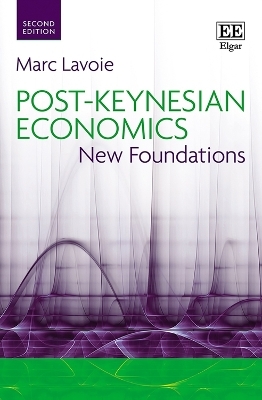
Modeling Monetary Economies
Cambridge University Press (Verlag)
978-0-521-17700-9 (ISBN)
- Titel erscheint in neuer Auflage
- Artikel merken
This textbook is designed to be used in an advanced undergraduate course. The approach of this text is to teach monetary economics using the classical paradigm of rational agents in a market setting. Too often monetary economics has been taught as a collection of facts about existing institutions for students to memorize. By teaching from first principles instead, the authors aim to instruct students not only in the monetary policies and institutions that exist today in the United States and Canada, but also in what policies and institutions may or should exist tomorrow and elsewhere. The text builds on a simple, clear monetary model and applies this framework consistently to a wide variety of monetary questions. The authors have added in this third edition new material on money as a means of replacing imperfect social record keeping, the role of currency in banking panics and a description of the policies implemented to deal with the banking crises that began in 2007.
Bruce Champ is Senior Research Economist at the Federal Reserve Bank of Cleveland. Earlier he taught at Virginia Polytechnic Institute, the Universities of Iowa and Western Ontario, and Fordham University. Dr Champ's research interests focus on monetary economics and his articles have appeared in the American Economic Review, the Journal of Monetary Economics, the Canadian Journal of Economics and the Journal of Money, Credit, and Banking, among other leading academic publications. He coauthored the first and second editions of Modeling Monetary Economies with the late Scott Freeman. Scott Freeman was a Professor of Economics at the University of Texas, Austin. He taught earlier at Boston College and the University of California, Santa Barbara. Professor Freeman died in 2004 after struggling with amyotrophic lateral sclerosis for several years. Professor Freeman specialized in monetary theory, and his articles appeared in the Journal of Political Economy, the American Economic Review, the Journal of Monetary Economics and the Journal of Money, Credit, and Banking, among other eminent academic journals. Joseph Haslag is Professor and Kenneth Lay Chair in Economics at the University of Missouri, Columbia. He previously worked as an economist at the Federal Reserve Bank of Dallas. He also taught at the Southern Methodist University and at Michigan State University. Professor Haslag has focused on monetary economics, and his articles have appeared in the Review of Economics and Statistics, the Journal of Monetary Economics, the Review of Economic Dynamics and the International Economic Review, among other leading academic journals.
Preface; Part I. Money: 1. A simple model of money; 2. Barter and commodity money; 3. Inflation; 4. International monetary systems; 5. Price surprises; Part II. Banking: 6. Capital; 7. Liquidity and financial intermediation; 8. Central banking and the money supply; 9. Money stock fluctuations; 10. Fully backed central bank money; 11. The payments system; 12. Bank risk; 13. Liquidity risk and bank panics; Part III. Government Debt: 14. Deficits and the national debt; 15. Savings and investment; 16. The effect of the national debt on capital and savings; 17. The temptation of inflation.
| Erscheint lt. Verlag | 9.5.2011 |
|---|---|
| Zusatzinfo | 25 Tables, unspecified; 78 Line drawings, unspecified |
| Verlagsort | Cambridge |
| Sprache | englisch |
| Maße | 178 x 254 mm |
| Gewicht | 640 g |
| Themenwelt | Wirtschaft ► Volkswirtschaftslehre ► Finanzwissenschaft |
| Wirtschaft ► Volkswirtschaftslehre ► Makroökonomie | |
| ISBN-10 | 0-521-17700-6 / 0521177006 |
| ISBN-13 | 978-0-521-17700-9 / 9780521177009 |
| Zustand | Neuware |
| Informationen gemäß Produktsicherheitsverordnung (GPSR) | |
| Haben Sie eine Frage zum Produkt? |
aus dem Bereich



